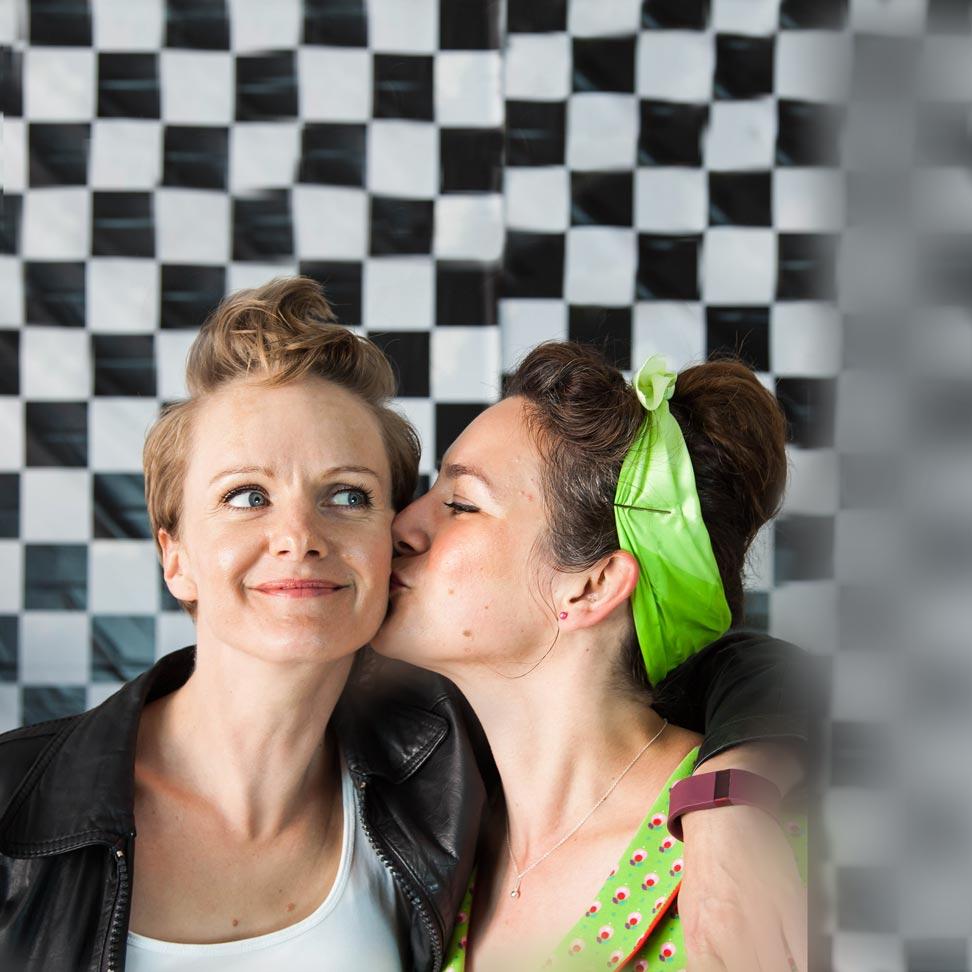The Iberian Peninsula is calling out to be explored, and in this first article of two we’re embarking on an epic Spain road trip that will take you through the country’s vast and varied landscapes, from verdant vineyards and the Mediterranean coast to Moorish marvels and artistic enclaves in Andalusia. Launch your Spain travel itinerary by flying into one of Spain’s northern airports; we recommend Santander or Bilbao Airport. Cross the border in south-west France if driving in from France.
Day 1 San Sebastián
Catch some sun in one of San Sebastián’s famous beaches © jon.roberts
San Sebastián or Donostia, in Basque, is one of Spain’s most picturesque cities and the epicentre of Basque cuisine, among the most highly regarded in the world. It is fun-loving, sophisticated and glamorous, welcoming the stars of the silver screen each autumn for its international film festival.
The beautiful city has two beaches: Playa de la Concha, a shell-shaped beach popular with families and Playa de la Zurriola, a longer beach that is a favourite of surfers.
Try your hand at water sports and relax on the beach by day. By night, head into the Parte Vieja (Old Town), where the cobblestoned streets are teeming with inviting pintxo bars. This Basque version of a tapas bar specialises in pintxos: delicious morsels of food usually balanced on a piece of crusty bread.
A vast array of pintxos line the bar tops, so simply take a plate, choose what you want and settle the bill when you’ve finished eating.
Recommended hotel: Hotel de Londres y de Inglaterra
Day 2 Basque Country down to Logroño, La Rioja
Make a detour to Bilbao to see the Frank Gehry-designed Guggenheim museum © KΛ13
The landscape of the Basque country could not be more different to the dry expanses often associated with Spain. Drive through lush, green valleys dotted with baserri, traditional Basque half-timbered houses. Architecture fans should take a short detour to Bilbao to see the Frank Gehry-designed Guggenheim Museum.
Drive onwards through the verdant valleys towards Logroño, the capital of the province of La Rioja and the entry-point into Spain’s most famous wine region. Spend the evening enjoying the city’s pintxo bars – most are centred around two streets: Calle de Laurel and Calle de San Juan. Try the legendary ‘champi’ grilled mushrooms (champignons) in Bar Soriano (Travesía de Laurel, 4) or sample a creative and modern spin on traditional cuisine at Torres Gastrobar (Calle de San Juan, 31). And don’t miss trying your first glass of Rioja in the region where it is produced.
Recommended hotel: Hotel Calle Mayor
Day 3 Vineyards of La Rioja
Enjoy the stunning view while driving through La Rioja, Spain’s acclaimed wine-making region
Delve deeper into Spain’s most famous wine-making region by spending the day touring vineyards, many of which provide guided tours around their caves and offer tastings. La Rioja is home to world-famous red wines, and some great value tipples, especially when compared to neighbouring France.
Visit the wavy roofs of Bodegas Ysios that were designed by the infamous Spanish architect Santiago Calatrava (who most recently designed the Oculus in New York). Tours and tastings are available in Spanish and English.
One of La Rioja’s oldest wine estates is that of Marqués de Murrieta. The winery’s founder, who gave it his name, imported production techniques from Bordeaux and produced his first wine in Logroño in 1852. Visitors can have a guided tour of the vineyard followed by a professional tasting of the estate’s wines.
The drive will take you through rolling hills of vineyards, past medieval villages and ancient churches. The Barrio de la Estación in the town of Haro is home to several wineries; check out the futuristic tasting pavilion designed by architect Zaha Hadid at López de Heredia.
Recommended hotel: Hotel Marqués de Riscal
Day 4 Zaragoza
The beautiful Basílica de Nuestra Señora del Pilar in Zaragoza © Italo Luis Muñoz Canessa
From La Rioja, the drive (1.5 hours) takes you through pretty countryside, past fields and vineyards until you reach the next destination on your Spain travel itinerary: capital of Aragón, Zaragoza, one of the country’s most underrated cities.
Soak up the stunning view of the domed Basilica de Nuestra Señora de Pilar, which sits majestically alongside the Ebro river, then explore the Aljafería, a fortified Islamic palace that is one of the best examples of Moorish architecture outside southern Spain. From 1018-1118, Zaragoza was one of the Taifa kingdoms, independent Muslim states that formed across the peninsula.
After your history fix, head to the Mercado Central, to soak up the scents and sights, as well as savour the flavours, of this beautiful covered market. You can stock up on some local produce or enjoy a laid-back drink at one of the no-frills bars.
Recommended hotel: Catalonia El Pilar
Day 5 Tarragona
Do not miss ancient port city Tarragona, it’s a real gem © Tarragona Municipal Tourist Board / Manel R. Granell
Drive eastwards (2 hours 20 minutes) towards Spain’s east coast and into the region of Catalonia to the ancient port city of Tarragona. This Mediterranean city is a hidden gem of Roman history, full of rich remains of the Roman city of Tarraco, including the stunning seaside amphitheatre and necropolis.
Wander through the old town and try some Catalan specialties including ‘pa amb tomàquet’, bread topped with grated tomato and olive oil – it’s a popular breakfast dish.
Recommended hotel: Hotel SB Ciutat de Tarragona
Day 6 València
València’s not all paellas, check out futuristic Ciudad de las Artes y Las Ciencias © KΛ13
A breezy two-and-a-half-hour drive down the Mediterranean coast takes you to Spain’s third-largest city: València. The city is home to one of Spain’s most famous dishes, paella – try it in an authentic beachside restaurant (Spaniards eat the heavy dish for lunch, not dinner).
Check out the old town, home to Mercado Central, a wonderful covered food market, and the Cathedral of València, said to be home to the actual Holy Grail from which Jesus drank at the Last Supper.
Don’t miss the Ciudad de las Artes y Las Ciencias, a set of futuristic buildings in the city’s dried out river bed, designed by Spanish star-chitect Santiago Calatrava. It comprises Europe’s biggest aquarium, a science museum and a giant IMAX cinema.
Recommended hotel: Casual València Vintage
Day 7 Tabernas Desert
That’s right, Spain’s got its own desert – and it’s a real wild west © Willem vdh
Drive southwards (just over four hours) and inland to the otherworldly landscape of Europe’s only desert, the Tabernas Desert.
Oasys Mini Hollywood, one of several Wild West-themed attractions in the area, was the original filming location for numerous Spaghetti Westerns in the 60s and 70s, including Sergio Leone’s The Good, the Bad and the Ugly. It is still used as a filming location today.
Recommended hotel: Cortijo Oro Verde
Day 8 Granada
Make sure to book tickets to the majestic Alhambra Fortress
Drive around the Sierra Nevada National Park towards Granada (1.5 hours).
Visiting Granada is like stepping into a fairy tale; the awe-inspiring Alhambra fortress and snow-capped peaks of the Sierra Nevada provide a cinematic backdrop to the city’s winding streets.
Make sure to book tickets to the Alhambra in advance; the Moorish fortress is one of the most visited sites in Spain. Don’t miss its Generalife Gardens, a mixture of masterfully designed fountains, pathways and flowerbeds, and the view of the Alhambra and the mountains beyond from the Mirador San Nicolás.
Make sure to also see Sacromonte, which, with its whitewashed cave houses, is a neighbourhood synonymous with flamenco, practised by the Granadian gypsies who made the area their home from the 15th century onwards. Watch the passionate, dramatic display of a flamenco show in one of the original caves.
Recommended hotel: Gar Anat
Day 9 Málaga
A piece of street art by the local football club – there’s plenty of edge to Málaga
Next on your Spain travel itinerary drive south-west towards the coast (1.5 hours) and the port city of Málaga. Long associated with the package holiday image of neighbouring resorts on the Costa del Sol, the city has reinvented itself over the past five years or so as a hip centre of art and culture. The Museo Picasso is a great place to explore the works of local boy Pablo, while offshoots of Paris’ Pompidou Centre and St Petersburg’s Hermitage have brought some wonderful international works to the city.
Keep an eye out for interesting street art and wander the old town, home to the city’s cathedral, whose tower you can climb for a panoramic view of the city … if you have the puff for its 200 steps.
Recommended hotel: Room Mate Valeria
Day 10 Seville
Third level of Seville’s Metropol Parasol features a nice boardwalk with stunning views © KΛ13
A 2.5-hour drive will take you to the capital of Andalusia, Seville, famed for its flamenco, Moorish architecture and pure joie de vivre of its inhabitants. Visit the Alcázar, a royal palace built by the city’s Moorish kings that is still used as a local residence by the Spanish royal family today, making it the oldest royal palace still in use in the world. See if you recognise which beloved TV show was recently filmed here.
One popular Seville activity is renting a rowboat on the Plaza de España and sail in the canal, and also checking out the Metropol Parasol, a wooden structure that resembles a strange spaceship, built in 2011. It provides strategic shade during the roasting summer months and its third level has a terrace with great views over the city.
Recommended hotel: Hotel Boutique Elvira Plaza Fly home from Seville Airport, which flies to many international destinations, or alternatively from Málaga Airport for more connections.


